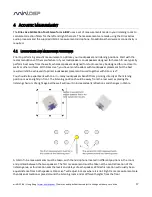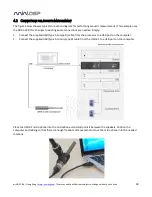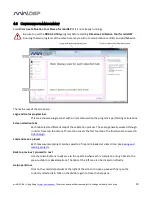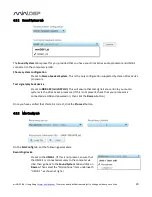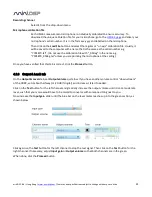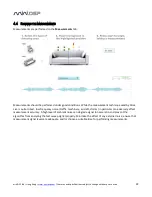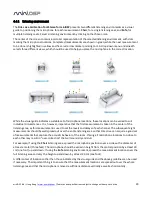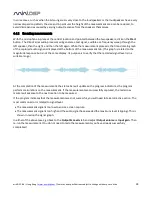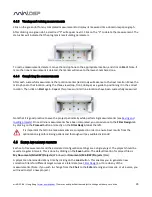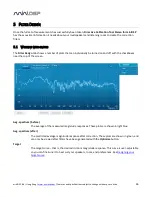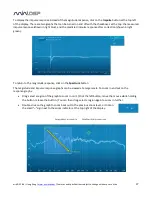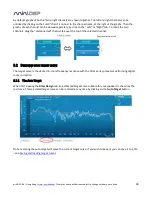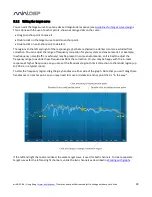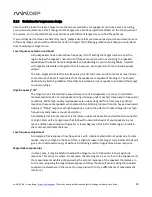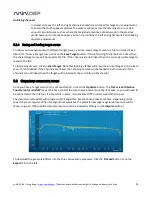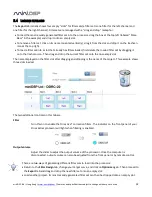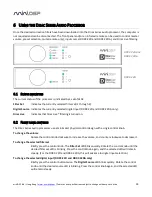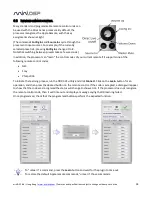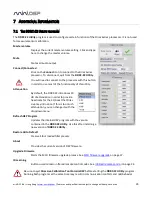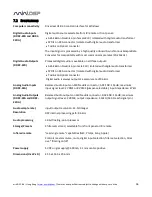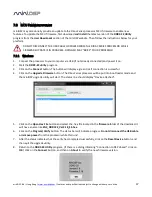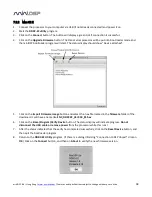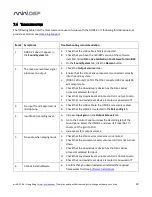
miniDSP Ltd – Hong Kong /
www.minidsp.com
/ Features and specifications subject to change without prior notice
24
In some cases, such as when the listening area is very close to the loudspeakers or the loudspeakers have a very
narrow dispersion pattern, the size and in particular the height of the measurement area can be reduced, to
avoid discrepancies caused by varying output response from the speakers themselves.
4.4.2
Executing measurements
With the microphone in place at the central location and pointed between the two speakers, click on the Start
button. The Dirac Series audio processor will generate a test signal, audible as a frequency sweep through the
left speaker, then the right, and then the left again. While the measurement proceeds, the time-domain graph
of the captured audio signal is displayed at the bottom of the measurement tab. (This graph is related to the
magnitude response but is not the same display. Its purpose is to verify that the recorded signal level is in a
suitable range.)
At the completion of the measurement, the status bar will update with a progress indicator as the program
performs calculations on the measurement. If the measurement was successfully captured, the red arrow
marker will advance to the next location to be measured.
If the program indicates that the measurement was not successful, you will need to take corrective action. The
most common error is related to signal level:
The measurement signal is too low to ensure a clean capture.
The measurement signal is too high and the audio signal has exceeded the maximum level (clipping). This is
shown in red on the signal graph.
In either of the above cases, go back to the Output & Levels tab and adjust Output volume or Input gain. Then
re-run the measurement. (You do not need to redo the measurements you have already successfully
completed.)








